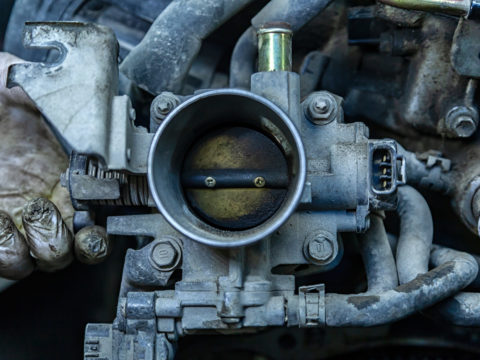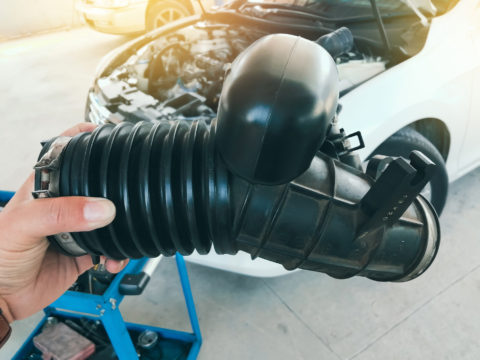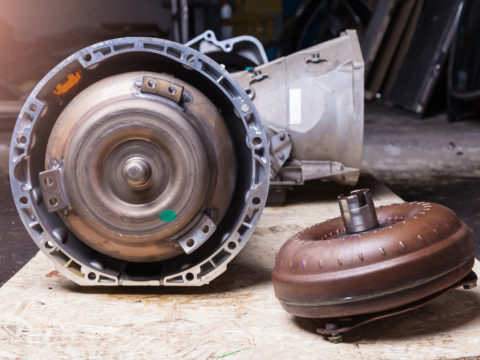Do you believe your car may be experiencing a bad thermostat? In this article, we will go over what a car thermostat does, the symptoms and causes for it to fail, and what to do when one has gone bad. The most common symptoms are overheating engines, steam coming from the engine, and fluctuations in the temperature gauge and cabin airflow.
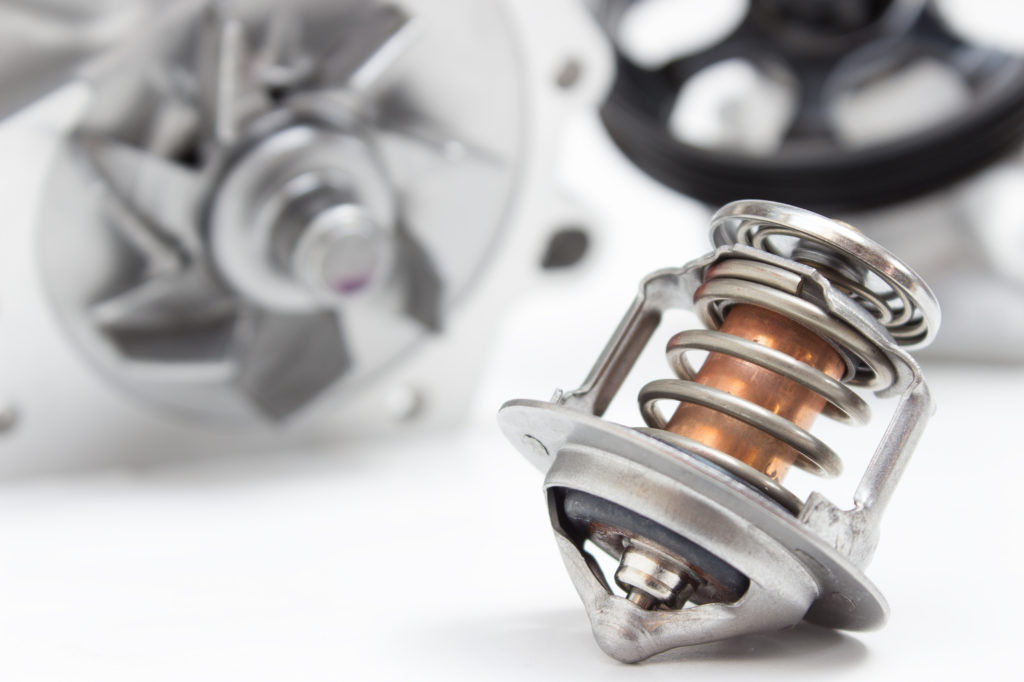
Contents
How does a thermostat work in a car?
Car thermostats are extremely important to ensure the car won’t overheat. The thermostat’s main job is controlling coolant flow within the engine, letting just enough coolant through to control the engine temperature.
The thermostat connects to a temperature sensor that records the coolant temperature and displays it on the dashboard where you can see it.
What happens when a car thermostat goes bad?
If the thermostat is not working accurately, your engine can overheat and cause significant and expensive damage to your engine. If kept unfixed for long periods when driving, your car can start steaming from the engine and potentially cause more to break.
It is dangerous to drive a vehicle when the thermostat is not working.
Symptoms of a bad car thermostat
For specific car models, the symptoms may vary. You can search your car model and “bad thermostat” and find out more information about your particular car and its thermostat.
For example, here’s a site walking through the specific procedure for a Chevy Cruze thermostat issue.
Fortunately, failing car thermostats are common problems and can typically be diagnosed and fixed with a simple part change.
It is valuable to pay close attention to symptoms. These symptoms give you a chance to take precautions before something terrible happens.
Here are the most common indicators that your car thermostat needs to be replaced or checked by a professional:
Engine Overheats
The most common and dangerous symptom of a bad car thermostat is overheating engines. An unexpected rise in temperature on the temperature display on your dashboard is typical.
If your engine overheats for too long, you may begin to see steam emit from the engine, forcing you to pull over.
Generally, you will not be able to drive longer than ten minutes before it overheats again. If this happens, it is time to visit your local mechanic.
On the other end of the spectrum, engines that do not heat up at all may also be a symptom of a bad thermostat.
Heater Fluctuates
It is also fairly common for you to experience the heat yourself when the thermostat is bad. The coolant that the engine utilizes also controls the heat and air conditioning blowing into the cabin.
Despite what you set as your preferred cabin temperature, if the thermostat is not working properly, the airflow temperature within the cab may fluctuate.
Temperature Gauge Fluctuates
Temperature gauge fluctuations are also a possible symptom of a bad thermostat. While it is possible to be a symptom of another common problem (electrical failure), it is also a symptom that your thermostat may be going bad.
If the thermostat gate’s function of allowing coolant flow is not perfectly timed, the engine temperature will fluctuate.
This is one of the earliest symptoms you may experience and provides reason to have the thermostat checked before it gets worse.
Steam from the Engine, Possible Leaks
As we said before, steam can come from the engine when overheating. The cause is hot coolant trapped. With nowhere to go the coolant will escape due to the pressure.
Once the coolant begins to boil, you will see steam emanate from the engine.
Once the coolant gets to a boiling temperature, it can cause leaks in weak points of the engine and radiator tank. Leaks appear when your engine starts steaming.
It is crucial to stop and turn off your car quickly to minimize the chance of leaks forming.
Rising Temperature and Expansion Tank is Full
Another way to find out if your thermostat may be going bad is by checking the radiator after the engine overheats, or if the temperature is rising above the balance.
A common cause for the thermostat to fail is a problem with the flap that allows for coolant to enter the engine.
Only check the radiator after the engine has cooled down.
If the radiator is full even though your engine overheats, it may be that your car thermostat is going bad.
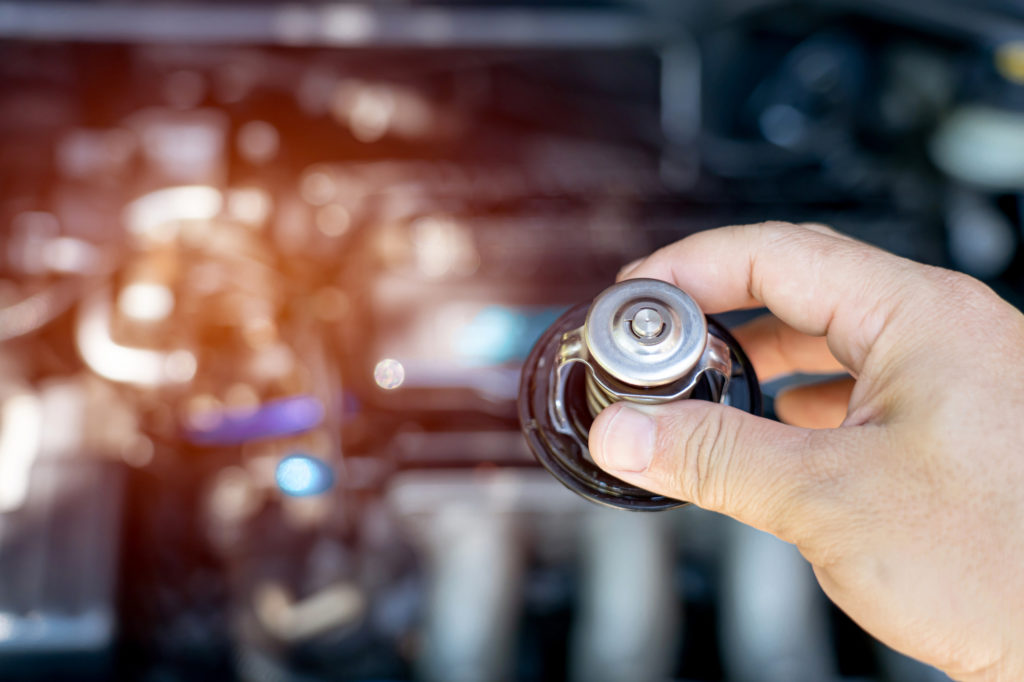
What causes a thermostat to fail?
Many issues may cause a car thermostat to break. Here are the most common causes.
Age
Age is the most common cause of bad thermostats in older and used cars. Simple wear and tear over time can break the internal components. Unfortunately, there is nothing you can do to prevent this from happening.
Defect or Improper Installation
It is certainly possible for there to be a defect in the part, which while rare, still can happen with newer cars. At the same time, an improper installation by a professional can still happen. After all, we are all human. Any minor defects or issues with installation can cause the thermostat to fail.
Coolant Contamination
Over time, coolant can become contaminated and cause the thermostat to fail. Once contaminated, coolant can congeal into a thick sludge, restricting coolant flow or cutting flow entirely. This sludge may also affect the thermostat readings, cause delays, and cause overheating.
Overheating
Finally, overheating is the leading cause of car thermostats going bad. If the engine overheats for any reason, the thermostat has the chance to fail. Within the thermostat, the components are only rated to operate at a set temperature.
If the temperature rises above this rating, overheating may damage the thermostat, prompting a replacement.
How long does a car thermostat last?
Many experts recommend car thermostats be replaced after ten years. There is no set time frame for a car radiator thermostat to go bad, and it can be common for them to stop working earlier.
If you have a suspicion that your thermostat may be going bad, it may be time to get it checked out by an auto mechanic.
What to do with a bad car thermostat?
After replacing the bad car thermostat, the technician should refill the antifreeze, leave the radiator cap off, and run the car for about five minutes. This will allow the antifreeze to circulate in the engine.
Afterward, you should turn the engine off, let it cool, and top up the antifreeze if necessary.
After turning the car back on, and seeing that the heat is staying consistent and not overheating, you can throw away the old thermostat and you’re done!
Thermostat replacement cost
The typical replacement for a car thermostat may cost in the wide range of $70 to $450. This mostly depends on the car and labor costs to replace the thermostat.
If you find yourself well versed in auto repairs, the thermostat by itself costs around $15 to $40.

